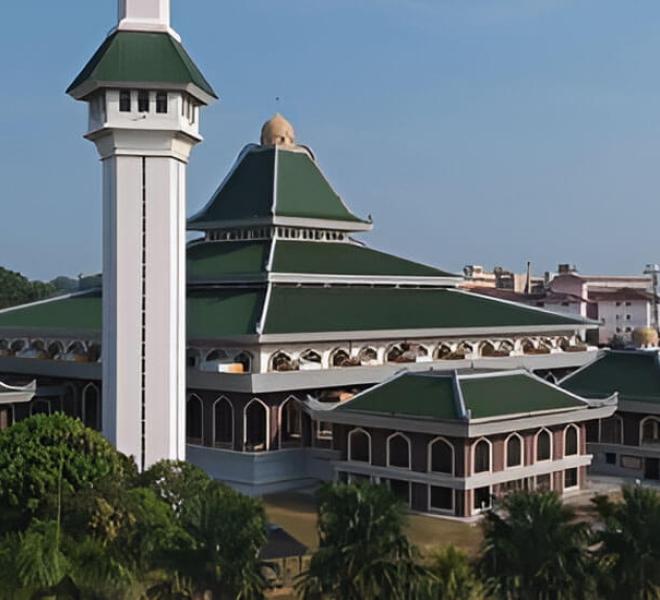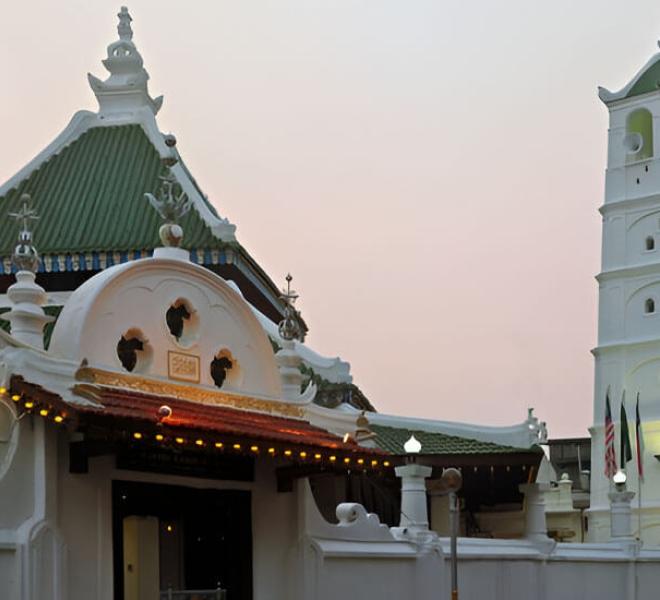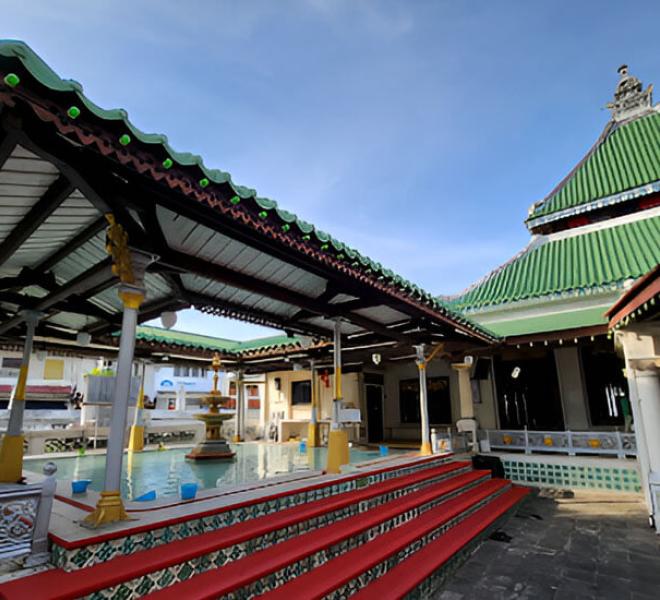Kampung Kling Mosque stands as one of Malaysia's most architecturally unique mosques, built around 1748 by Indian Muslim traders who settled in Melaka during the Sultanate period. This mosque represents a remarkable fusion of architectural styles, combining traditional Islamic design elements with Chinese, Malay, and Indian influences that reflect the multicultural nature of Melaka's historical community. The mosque's most distinctive feature is its minaret, which resembles a Chinese pagoda more than a traditional Islamic tower, topped with a Chinese-style roof rather than a dome, making it one of the few mosques in the world with such unique architectural characteristics.
The mosque's interior showcases a blend of cultural influences through its decorative elements, including Chinese-style wooden screens, Malay timber construction techniques, and Indian-influenced geometric patterns. The main prayer hall features traditional Islamic calligraphy alongside decorative elements that reflect the cultural backgrounds of its founding community. The mosque's courtyard contains a ceremonial well and ablution areas designed in traditional Islamic style but constructed using local materials and techniques. The mosque serves the Indian Muslim community (primarily Tamil Muslims) and conducts prayers in multiple languages, including Arabic, Malay, and Tamil, reflecting the diverse linguistic heritage of its congregation. The mosque's historical significance extends beyond its architectural uniqueness - it represents the successful integration of immigrant communities into Malaysian society while maintaining their distinct cultural and religious identities.
Today, the mosque continues to serve as an active place of worship while also functioning as a cultural heritage site that demonstrates the harmonious coexistence of different cultures and religions in Malaysia.







Add new comment